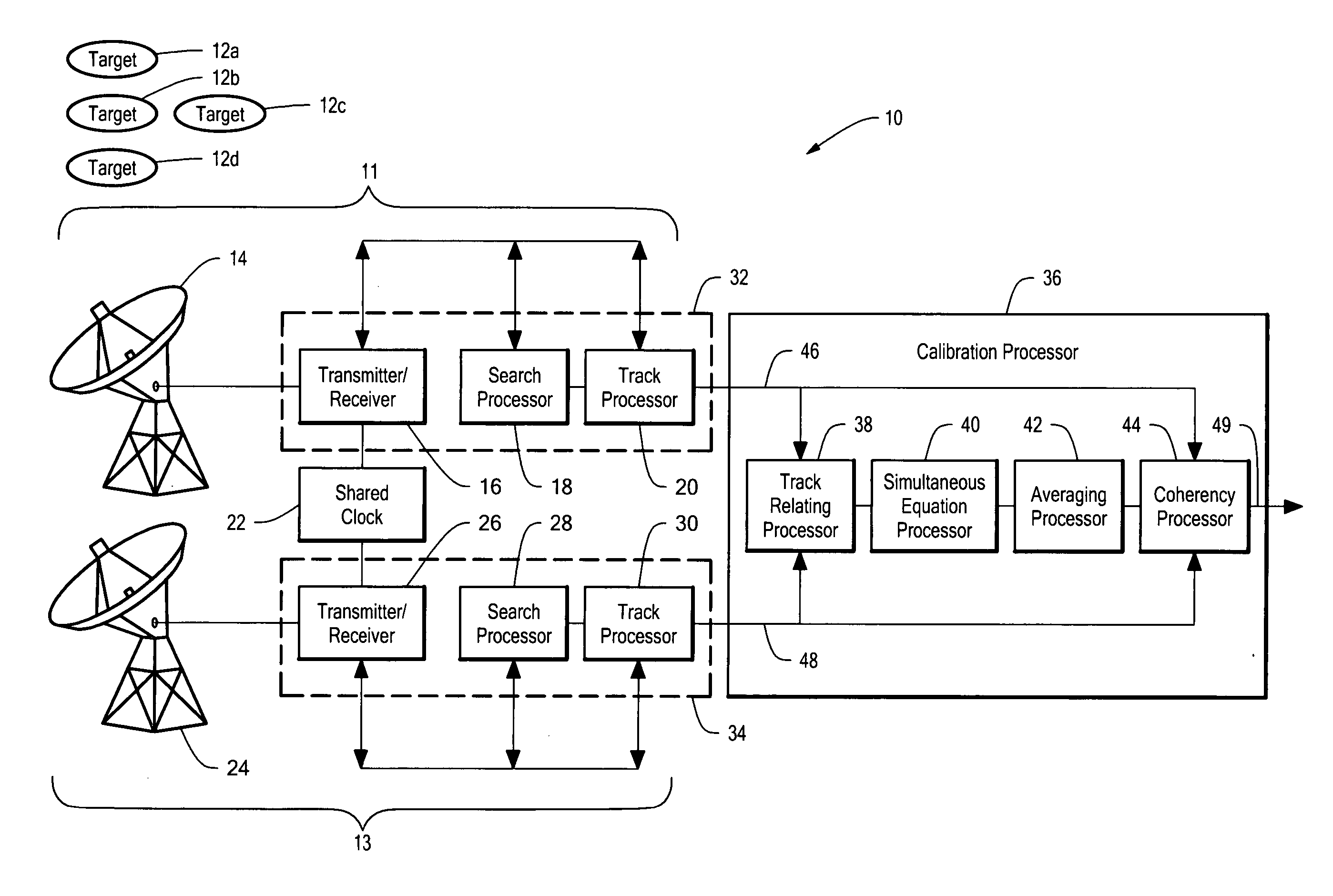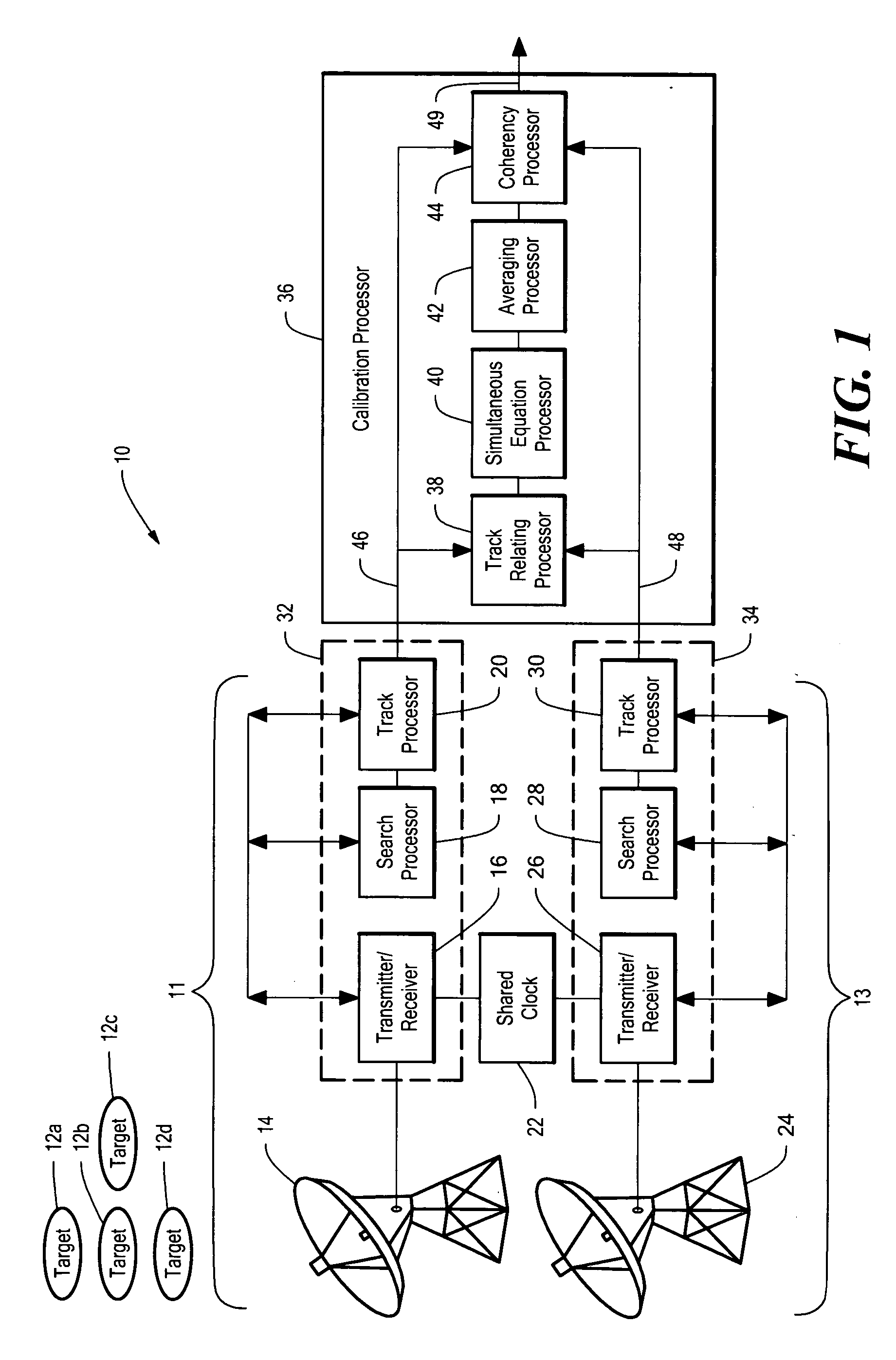System and technique for calibrating radar arrays
a radar array and radar technology, applied in the field of radar systems and methods, can solve the problems of inability to combine coherently, lack of signal coherence between radars, measurement inaccuracy, etc., and achieve the effect of better detecting a targ
- Summary
- Abstract
- Description
- Claims
- Application Information
AI Technical Summary
Benefits of technology
Problems solved by technology
Method used
Image
Examples
Embodiment Construction
[0023] Before describing the system and method for calibrating radar arrays of the present invention, some introductory concepts and terminology are explained. As used herein, the term monostatic refers to operation of a single radar, in which the radar transmits a radar signal, the radar signal propagates to and echoes from a target, and the echo is received by the single radar. As used herein, the term bistatic refers to operation of more than one radar, for example first and second radars, in which the first radar transmits a radar signal, the radar signal propagates to and echoes from a target, and the echo is received by the second radar. As used herein, the term “radar array” refers to a radar antenna having a plurality of radar elements. However, the concepts used herein apply equally well to a radar antenna having any form of construction.
[0024] Referring now to FIG. 1, a system 10 for cohering two radar systems includes a first radar system 11, also referred to herein as a...
PUM
 Login to View More
Login to View More Abstract
Description
Claims
Application Information
 Login to View More
Login to View More - R&D
- Intellectual Property
- Life Sciences
- Materials
- Tech Scout
- Unparalleled Data Quality
- Higher Quality Content
- 60% Fewer Hallucinations
Browse by: Latest US Patents, China's latest patents, Technical Efficacy Thesaurus, Application Domain, Technology Topic, Popular Technical Reports.
© 2025 PatSnap. All rights reserved.Legal|Privacy policy|Modern Slavery Act Transparency Statement|Sitemap|About US| Contact US: help@patsnap.com



